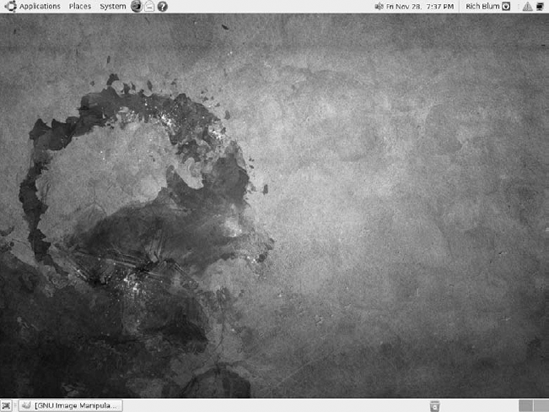Chapter 4. Exploring the Desktop
Secrets in This Chapter
The Desktop Layout
Exploring the Panel
Panel Menus
Multiple Desktops
Now that you have Ubuntu installed on your workstation, it's time to go exploring. The default desktop used in Ubuntu is GNOME. If you've never used the GNOME desktop before, things might seem a little different. Although GNOME borrows many of the same windowing ideas from Microsoft Windows and Apple Macintosh, it does have some unique features of its own. This chapter walks through the basics of the GNOME desktop, providing you with a detailed tour of how to utilize the desktop to its fullest.
Desktop Features
When you first log in to the Ubuntu workstation system, you're greeted by the default GNOME desktop, shown in Figure 4-1.

Figure 4.1. The default Ubuntu GNOME desktop.
The GNOME desktop layout used in Ubuntu consists of three sections:
A bar at the top of the screen containing menus and icons
A blank desktop area in the middle of the screen
A bar at the bottom of the screen containing a trash can and a couple of desktop icons
The bars at the top and bottom of the screen are called panels. Each panel has a different function on the desktop. The panels can contain menus for selecting applications and utilities, icons to launch applications, and special programs called panel applets.
The following sections describe each of the three sections in the Ubuntu workstation ...
Get Ubuntu® Linux® Secrets now with the O’Reilly learning platform.
O’Reilly members experience books, live events, courses curated by job role, and more from O’Reilly and nearly 200 top publishers.

